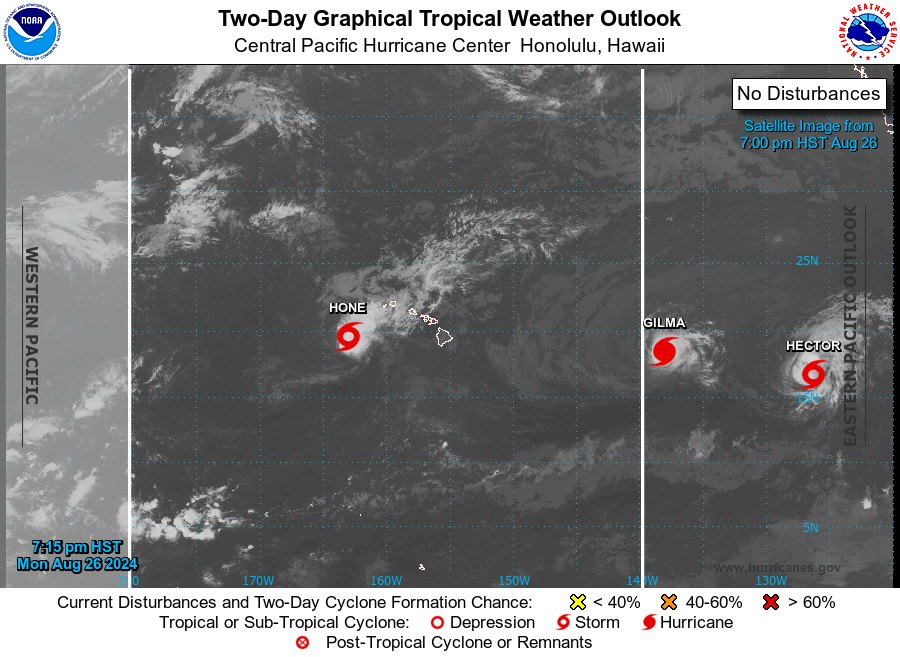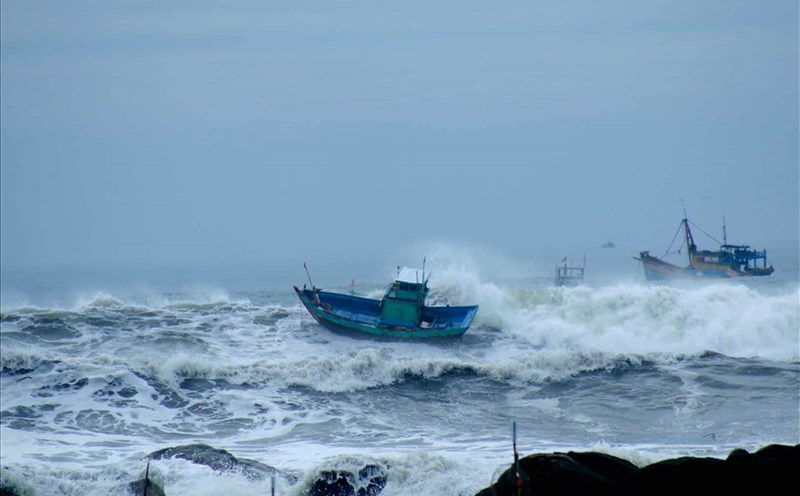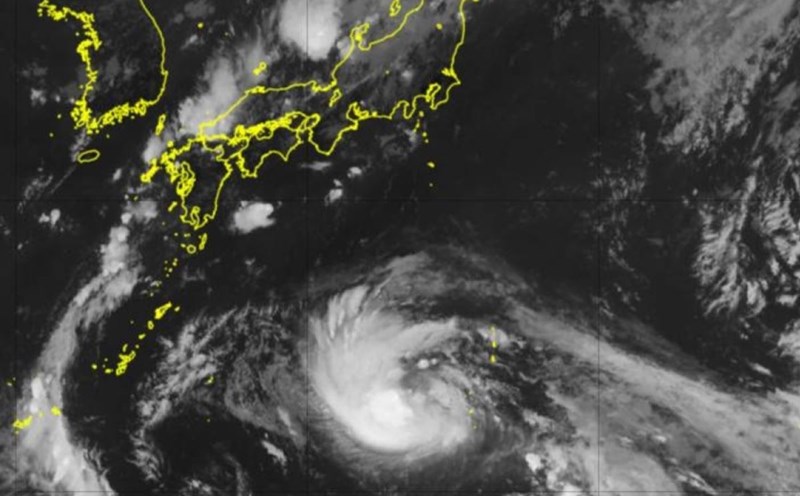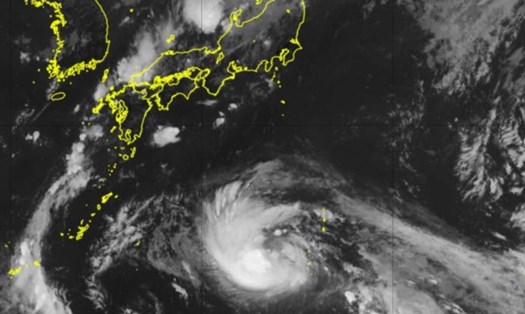Storm activity in the Pacific is becoming the focus this week, with three active storms at the same time, including 2 hurricanes and 2 major storms.
According to the US National Hurricane Center (NHC), this severe weather situation is causing many safety concerns and traffic disruptions in the area.

Typhoon Gilma quickly strengthened into a level 4 super storm on the 5-level Saffir-Simpson storm scale on August 25.
Although the storm's path did not cause significant direct damage to the mainland, it did create severe sea conditions with waves up to 3.5 meters high and wind gusts up to 209 km/h, making it dangerous. for boats in the area.
According to the latest forecast, Hurricane Gilma is expected to weaken into a depression as it approaches the Hawaiian Islands on August 30, with the impact expected to be negligible.
Meanwhile, Hurricane Hone made landfall in the Hawaiian Islands on August 25 with the strongest winds at the center of the storm about 129 km/h. Although only a level 1 storm, Hone caused violent impacts, with waves up to 4.3 meters high and wind gusts of about 96 km/h.
The biggest threat from Storm Hone is the risk of flash floods and landslides on steep slopes. Some areas on the eastern Big Island of Hawaii recorded up to 350 mm of rain in 24 hours - nearly three times the average monthly rainfall in August.
At the same time, Hurricane Hector moved west at a speed of 12 mph (19 km/h) and maintained maximum winds of about 50 mph (85 km/h).
It is forecast that in the next few days, wind speed may increase slightly before gradually weakening. The storm's strong winds could affect an area up to 105 miles (165 km) from the center of the storm.
While the above three storms are active in the central Pacific, storm Shanshan is expected to make landfall in Japan today (August 27).
Given the complicated storm situation, tourists need to closely monitor weather reports and warnings from local authorities. Avoid ocean and beach activities during storms.
Be prepared for an emergency, including stocking up on food, water, and essential supplies. Check and adjust travel schedules if necessary, especially flights or outdoor activity plans.
Comply with any evacuation instructions or safety warnings from authorities.
For visitors in Hawaii, be especially alert to the risk of flash floods and landslides.
For travelers planning to visit Japan, you should consider canceling or postponing your trip. If travelers are in the affected area, they should closely monitor the Shanshan situation and prepare for possible traffic disruptions.
Finally, save the contact information of the Vietnamese Embassy or Consulate at your destination for assistance when needed.






